|
By John S. Lancaster
During his career in Nashville from 1837 to 1861, Adolphus Heiman designed over 30 structures ranging from churches, public buildings, residences, forts, and a bridge. By the mid 1850s his architectural skills and achievements had received such recognition that he was referred to as “Nashville’s Architect.”
Until recently, Heiman’s work in designing and making tombstones and vaults had never been investigated. Three varied examples have been discovered showing another side to the talents of this Prussian immigrant.
Located within the Old City Cemetery on Fourth Avenue South are two very different markers. The plainer and more common looking of the two tombstones was made for a Benjamin Sharpe in 1848. It has experienced such severe weathering that the acroteria on top of the four corners and much of the inscription has eroded away. Identical to several others in this cemetery, this stone is documented as being by Heiman in the Chancery Court case between F. Scott, Adm. vs. Heirs of Benjamin Sharpe.
As part of the docket evidence now preserved at the Nashville Metropolitan Archives, an entry on an itemized ledger page shows that A. Heiman was paid for a tombstone on September 8, 1848. Also included is a note written in Heiman’s own hand confirming payment from Mrs. Ann Sharpe for the “forty seven dollars on account of a tomb for Benj. Sharpe deceased.” Heiman seems to have been a friend of the family as his name appears on their wedding bond and as an executor in Mrs. Sharpe’s will.
Other tombstones identical to Mr. Sharpe’s in the Old City Cemetery may be attributed to Heiman as further documentation is discovered. One such record was recently found in the Chancery Court case of J. W. Birdwell & wife vs. William H. Harris where a receipt for payment of a monument for William Harris shows the payees as Heiman and Stevenson. Stevenson was a popular stonecutter in Nashville and signed his name to the Mexican War Memorial in Gallatin, Tennessee. Though Mr. Harris was buried in Old City Cemetery, his stone has yet to be located. [Editor’s Note: since the publication of this article, the Nashville City Cemetery Association has recorded his tombstone, ID #190045]
The other tombstone in Old City Cemetery marks the grave of Nancy Maynor. The wife of Pleasant Maynor, Nancy passed away on the 28th of May in 1836. Pleasant Maynor remarried on February 21, 1837 to Jane M. Iredale. Of interest is the fact that Heiman is believed not to have arrived in Nashville until 1837. While there was a place for another name on the opposite side, only information relating to Nancy was carved into the stone. This stone is also signed near the base with “A. Heiman.”
The carver or designer rarely signed tombstones unless they were unique. This monument is an above-ground stone box topped with a shaft-like pedestal surmounted by an urn. Two notable details are the carved butterfly or moth on the pedestal and the anthemion designs on the four corners of the tombstone. The use of an above-ground stone vault was common in the Nashville area, but the bodies were buried in the ground underneath instead of inside them.
The third and most elaborate example of Heiman’s known stonework was the Franklin Vault in Sumner County, Tennessee. Located on the property of Fairview Farm, the vault was built for the wealthy slave trader Isaac Franklin and his family. Only seven years after marrying the much younger Nashvillian, Adelicia Hayes, Mr. Franklin died suddenly in Louisiana in 1846 at the age of 57. His wishes were to be returned to Tennessee for burial and his remains were shipped in a lead-lined casket filled with alcohol. His body was placed in a temporary brick structure until a permanent vault could be constructed. Tragedy struck the Franklin household again only seven weeks after Mr. Franklin’s death when his two oldest daughters, Victoria and Adelicia, succumbed to croup and bronchitis only two days apart.
The loss of her husband and children devastated the young widow and she moved back to Nashville. Her father, Oliver Bliss Hayes, was appointed to handle her affairs. It is unclear who hired Heiman to design the Franklin Vault, but he designed it along with an octagon cast iron fence for $2,500.00. By 1850 the mausoleum had not been finished. A local builder hired to do the job had subcontracted the work. When the contractor died in 1849, the subcontractor, who had not been paid, tried to sue the trustees of the Franklin estate for monies still owed him, but was unsuccessful.
The Sumner County Chancery Court case of Henley vs. Armfield specifies that the material for the vault was to be solid stone masonry except for the brick interior arches for the ceiling. The dimensions were twenty-eight feet square and fourteen feet high excluding an obelisk. The walls were to be two feet thick with the outside rubbed and with four interior pillars, two feet square, to assist in the support of the superstructure. Four partition walls would create an eight-feet-wide central passage giving access to six apartments on each side with two sets of stone shelves that were to be no less than six inches thick. The floor was to be made of “chiseled flagging of stone diamonding with stone of different colors” and the arched brick ceiling was to be “plastered with hydraulic cement.” The outward door was to be made of iron and the inner door of cedar. A window with an iron grate would provide ventilation. The roof was to be made of stone slabs five to six inches thick laid in such a way as to prevent leaks. As cost was not a prohibiting factor, the finest materials available were to be used.
It was specifically noted that Heiman was personally to erect the monument on top of the vault and make the design on the two frontispieces. Some of the details appear to have never been finished, but the design of the frontispiece was completed as an Egyptian motif of an orb flanked by winged serpents. Probably the largest vault Heiman designed, it had a style more readily found in the St. Louis Cemetery of New Orleans than on a Sumner County farm in Tennessee. A 1911 picture of the Franklin Vault has been published in Margaret Lindsley Warden’s booklet, The Saga of Fairvue, 1832-1977, p. 10.
In 1912 the vault was struck by a tornado and collapsed. Fortunately, the remains of Franklin and his children had been removed in 1884 to Mt. Olivet Cemetery, Nashville. The fence long ago given away, the ruins of the vault are now threatened by development, but for years the Egyptian-styled lintel remained lying in the tall grass.
While not common knowledge, many prominent architects of the early 19th century–such as Robert Mills, Gideon Shyrock, and William Strickland–designed tombstones or monuments along with their buildings. Heiman was no exception. Even after the completion of his First Baptist Church project, it appears that he continued to rely on stonemasonry as a primary form of income until his return as a hero from the Mexican War in 1847. This status pushed him more into the spotlight of Nashville society and he began to get commissions for all types of building projects.
It is ironic that the man who seemed to be the favorite architect of ante-bellum Nashville would fade into obscurity and have most of his work destroyed, including almost all of his public buildings and private residences. Even his final resting place is unmarked beneath the forty-five-feet granite monument in the center of Confederate Circle in Mt. Olivet Cemetery.
|
|
|

